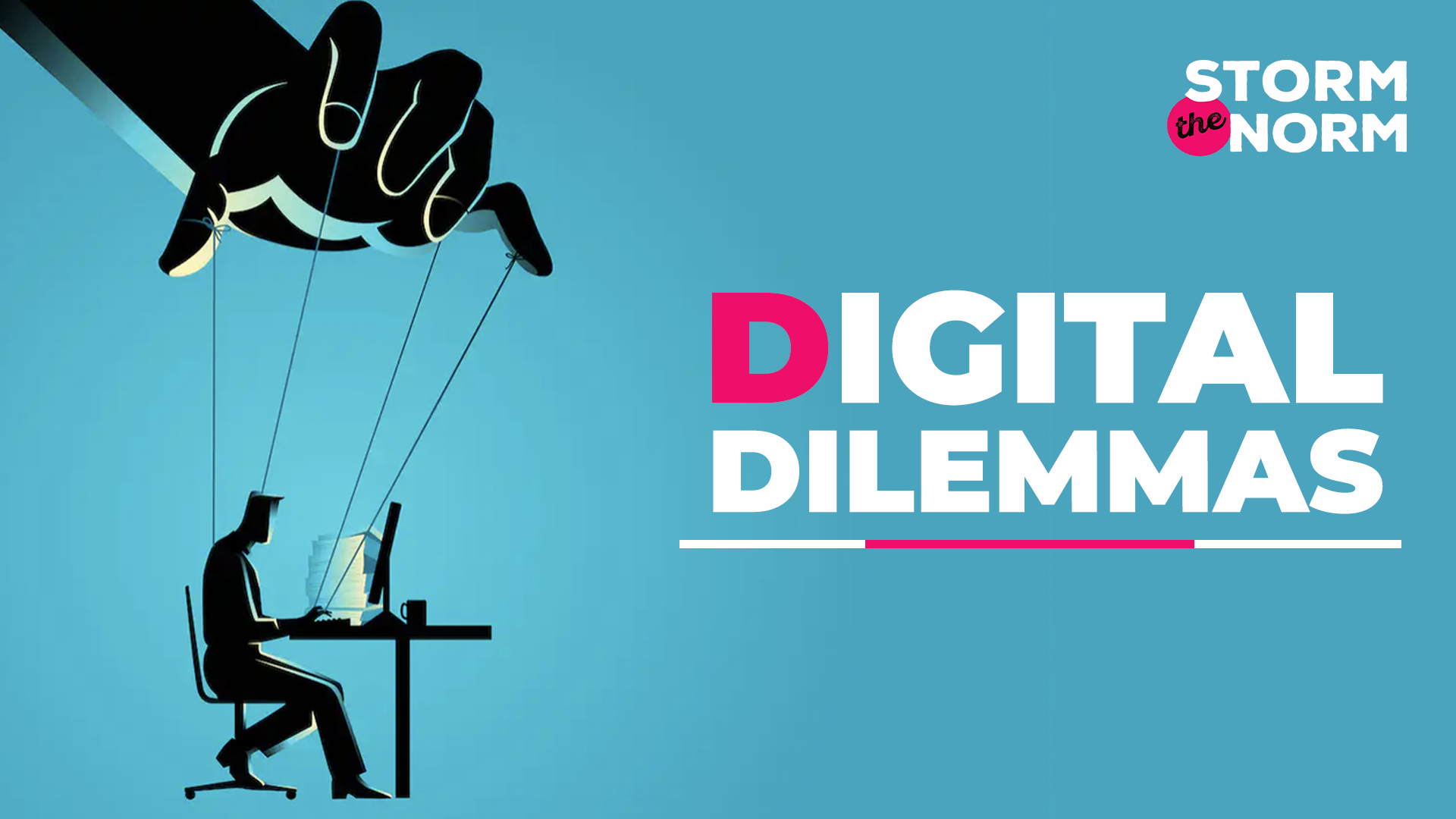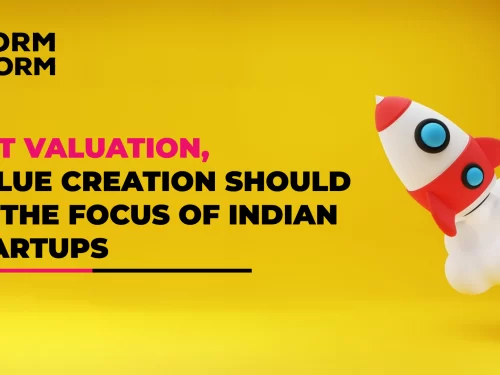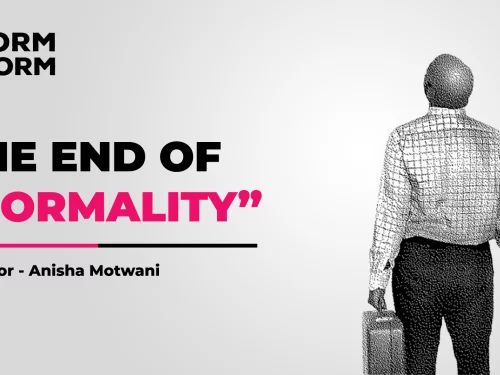
Titan of tech abroad but we are still – Wimps at home.
A Digital Dichotomy divides us.
India reappeared on the world stage in the 90’s flexing its new found Digital / IT muscles.
Within a relatively short span of a decade marquee companies from our homeland had asserted themselves with new age technology solutions that quickly became lifelines or speedometers for global Fortune 500 companies.
A long list of Indian tech blazers – Infosys, Cognizant, TCS and Wipro made every Indian proud.
To Silicone Valley we responded with one word – Bangalore!
But can we name even one Indian company that is a global benchmark for IT adoption or usage? Not really.
What a dichotomy it is then, that- we have made IT a multi-billion dollar industry and evangelised it the world-over but we forgot to seed it in our domestic ecosystems. All our successes were owed to the export route i.e. – vending of our IT skills and intellectual capital in the global market whereas adopting and implementing the same digital lessons in our indigenous industry could have been a huge growth driver.
And so while heavyweight blue-chip Indian tech companies are busy staging digital revolutions in offshore markets our digital infrastructure back at home remains a crumbling sub-optimal affair: government, civic and public service offices, real estate, land records, public transportation, education and healthcare are just some of the industries that have an opportunity to reinvent themselves and leapfrog years ahead in time if only they are able to embrace digital systems.
Our Hon’ble Prime Minister recognizes this as a priority area that can potentially reset India’s growth path which is why he is at the vanguard of creating a Digital India that can boast of – high tech infrastructure and tech-enabled smart cities.
In parallel Digital has emerged as a buzzword in corporate world too. But even as conversations on going digital start to increasingly mainstream and catch tailwinds momentum – equally there are questions on how exactly does one go about it? For the digital opportunity it seems is riddled with a veritable minefield of dilemmas and challenges.
What are the – Dilemmas of going Digital?
To begin – we have a Monsoon of emotions when it comes to things Digital.
We are either caught between prolonged periods of disbelief, intermittent dry spells of dismay, and occasional thunders and downpours of Digital euphoria.
This ephemeral stop-start cycle is an endemic and industry-wide phenomenon because most Indian organizations are still not sure how to go about building a digital portrait.
Fact is that there is no magic formula to crack the Digital code except a cognizance of the fact that building a digital eco-system is a complex execution and one that spans across functions, workflows and requires on-boarding multiple key stakeholders who need to collaborate to succeed.
So, before you / your company embark on a Digital journey a quick self-appraisal is recommended.
Start by asking yourself/your team 3 fundamental questions –
- 1. Do you really buy the Digital story or not?
- 2. Do you have the gumption to bury archaic human intensive business models and processes in the quest for a robust digitization?
- 3. Are you content with “Doing just enough” in the digital space?
What a tangled web we weave
Apart from the above Big 3 self-assessment questions, there are a plethora of challenges and watch out’s that tend to overwhelm the digital “explorer” who had set out to break a new digital ground.
Here’s your Billboard Top 10 list of challenges in the Digital ring of fire –
- The ‘googly’ is in the first step: For most organizations grappling with a digital vision adhering to a digital strategy proves to be the googly. What should be their first step:
- Should they trigger with a big bang i.e. pour in large investments and attempt to scale up the digital journey in unrealistic timelines or
- Take the safe, linear route of taking incremental digital steps over a period of time.
Invariably, the former approach leads to failures in planning and/or execution stages causing the organization to retreat and this dilutes the importance attached to Digital mediums over the long-term.
With the latter approach often the organization fails to introduce new-age capabilities in conjunction with its ongoing digital efforts. And this makes for a lopsided organization structure that lacks balance and rhythm as some processes are accelerated but most others remain stuck in a warped time-zone.
- It’s a slow build: It was introduced as an instant media ripe for monetization in the “classroom / digital workshop” (replete with polished American business case studies) but reality is that building the platform organically can take years.
- Results will take sweet time: Never mind your going-in expectations – ROI+ from Day 1 and building scale from Day 2, a digital business like any other traditional brick & mortar business takes time to establish, stabilize and take off. Moreover, the success rate of digital businesses is scarcely encouraging. Most projects fail to take off or fold up in early stages of execution. Even when projects get to execution we find that not all businesses get a magical growth from their digital Initiatives. On the other hand, Management is quick to pounce and pronounce anything less than double digit growth a failure.
- It’s not that cheap: 27 year old millionaires hit the gold pot without putting more than a buck out of their pocket or so you were told. But the fact is that building a digital ecosystem can be a serious cash burn. Inheriting a running ecosystem is great till they send you the – Annual maintenance, annual update, annual license, and annual renewal fee.
- Digital Devastation: A digital build often requires a business process Re Engineering and as anyone who has been there will tell you, BPR is scary, unsettling to status quo and tends to runs in to walls. It can result in merging department work flows, wiping out fat layers and rewriting the organization code. Painful? You bet!
- Weak ownership of the digital agenda: The problem is exacerbated given that too many or too few owners of a digital initiative invariably spell its doom. An inadequate top management sponsorship and unclear metrics of success add to the “digital fog”. What is needed is a clear line of leadership empowered to take cross functional and organization wide decisions to push Digital agendas ahead progressively.
- Who is the Target: Given the low internet penetration in India not all existing and potential customers will be on the same stages of technology adoption. This then begs a fundamental question – Who is the target customer of a digital programme.
- Is it the urban metro-city internet savvy user or the affluent albeit untapped base in Tier 2/3 city who is an occasional user?
- Who should the business chase after – the highest or the lowest common denominator? There is always a fear of addressing one segment at cost of the other.
- Jargon factor: Digital evangelists are hardly making it easier by selling the dream in a language few can understand or relate to. Getting the investor to understand the idea or solution in layman’s language possibly crowns the bucket list of woes.
- Cultural shift: Old economy businesses have the added challenge of consciously seeding and nourishing a culture of “digital thinking” within the organisation.
- And finally – It is not about the Technology, silly: Leapfrogging certain areas of the business towards high end technology while casting aside the interdependent areas – Customer services, operations can miscue an entire digital ecosystem.
The best code, software or solution cannot substitute good old business sense which is to offer a world-class unified experience across the organization and customer-facing touch points. Most customers do not know, cannot remember or do not care about which software or platform you are using. But they will always remember and come back to do business after a fabulous experience.
As of date, digital adoption continues to lag in Corporate India as the addressable market still remains nano sized pooling in less than 10% of channel sales making the other 90% offline business a focal area for most brands.
But no one can deny that Digital is coming of age – fast.
While Corporate India tries to figure it out you too can pitch in and help out by answering one question – “Do you also regularly browse and window shop in the market but then head over to buy the discounted product on an estore?”




